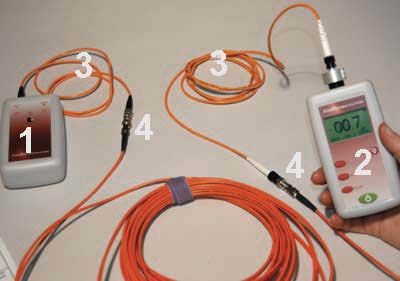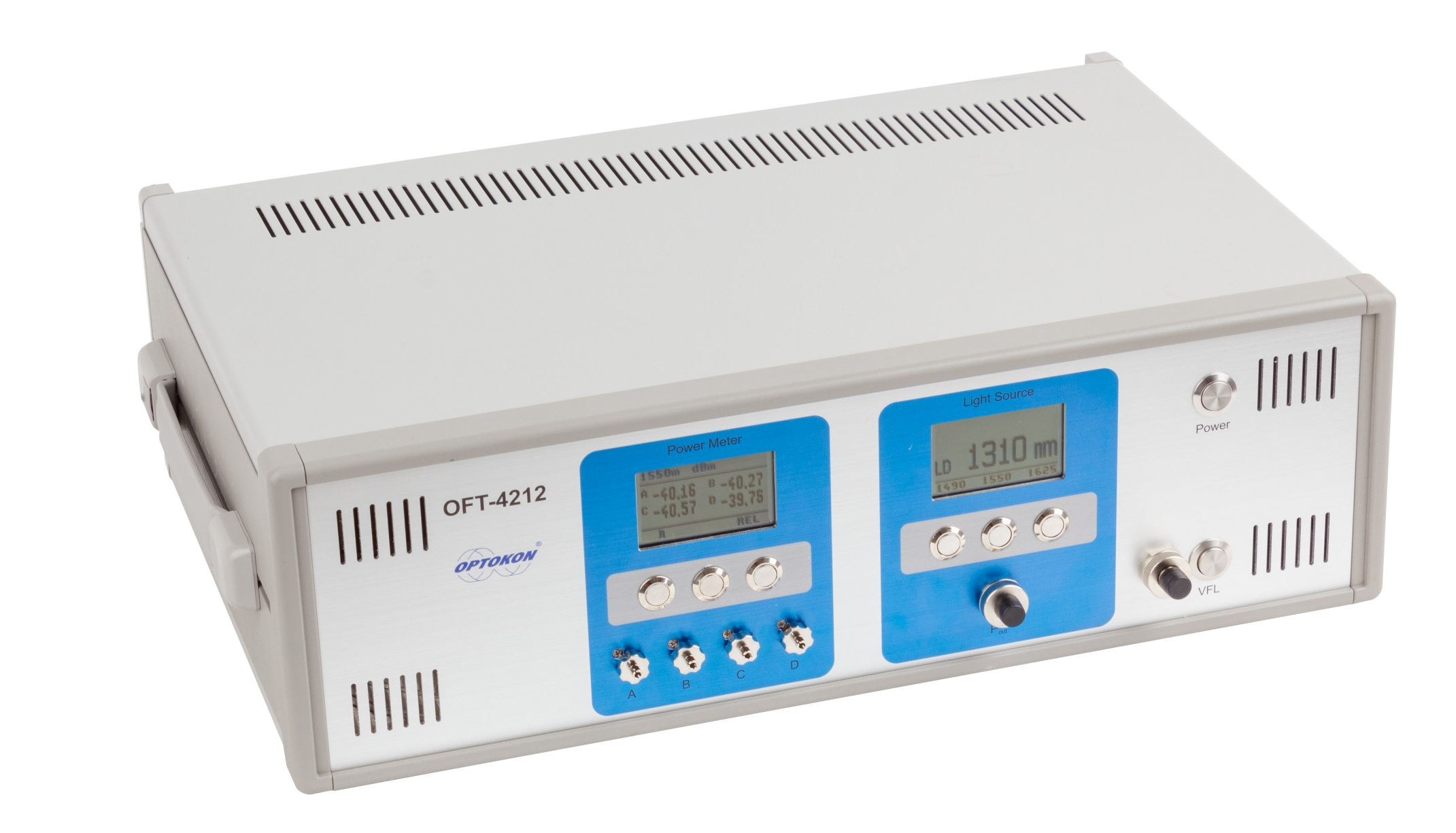Recognizing How an Optical Measurement System Boosts Accuracy in Industrial Applications
Optical measurement systems play a crucial function in enhancing accuracy throughout various industrial applications. By leveraging sophisticated modern technologies such as laser interferometry and 3D imaging sensors, these systems supply high-resolution, non-contact measurements. This capacity reduces the danger of damaging sensitive parts while guaranteeing precision. The effect of these systems extends past mere measurements. Exploring their benefits, applications, and future trends exposes an intricate landscape of innovation and challenges that advantages more detailed assessment.
The Basics of Optical Measurement Systems
Optical measurement systems offer as vital devices in different industrial applications, giving exact information collection and analysis. These systems utilize light as a main methods of measurement, leveraging optical principles to examine measurements, settings, and surface area attributes of items. They include components such as lasers, electronic cameras, and sensing units, which work with each other to record high-resolution photos and data.
The modern technology makes it possible for non-contact dimensions, minimizing the threat of damaging delicate elements. Optical measurement systems are functional, discovering energy in top quality control, setting up confirmation, and dimensional evaluation across different markets. They are particularly reliable in environments where standard measurement strategies may fail, such as measuring complex geometries or observing quick motions.
As sectors remain to develop, the combination of optical measurement systems will certainly stay important for guaranteeing accuracy and effectiveness, ultimately enhancing item high quality and functional productivity in various manufacturing processes.
Secret Technologies Behind Optical Measurement
Secret technologies such as laser interferometry strategies and 3D imaging sensors play an essential role in the performance of optical measurement systems (robotic vision). These innovations make it possible for exact dimensions and comprehensive evaluation in different commercial applications. Understanding their functionalities is necessary for utilizing the complete capacity of optical measurement systems
Laser Interferometry Techniques
Various laser interferometry techniques have actually changed the area of optical measurement, supplying unprecedented accuracy and precision in various commercial applications. These techniques use the interference of systematic light waves to determine range, variation, and surface abnormalities with nanometer-level precision. Common techniques include Michelson interferometry, which divides a beam and analyzes stage shifts, and Fabry-Pérot interferometry, understood for its high resolution in determining small changes. Furthermore, laser Doppler interferometry employs frequency changes to assess speed, making it indispensable in dynamic dimensions. The adaptability of these methods permits their combination into diverse production procedures, boosting quality assurance and guaranteeing adherence to stringent resistances. Consequently, laser interferometry proceeds to play an essential duty beforehand industrial measurement standards.
3D Imaging Sensors
Improvements in measurement innovation have actually resulted in the development of 3D imaging sensors, which play a considerable role in optical measurement systems. These sensing units capture three-dimensional information via different strategies such as triangulation, time-of-flight, and structured light. By properly reconstructing the form and measurements of items, 3D imaging sensing units enhance the precision of dimensions in commercial applications. They offer real-time feedback, facilitating high quality control and ensuring that components fulfill strict specs. Additionally, their ability to operate in difficult environments, such as differing lights problems, makes them important in producing procedures. As sectors progressively embrace automation, the integration of 3D imaging sensing units right into optical measurement systems is anticipated to drive more renovations in effectiveness and precision.
Advantages of Optical Measurement in Market
Although typical measurement techniques have long been the standard in commercial settings, optical measurement systems use considerable advantages that improve accuracy and performance. These systems utilize light to capture data, causing high-resolution measurements that are often unattainable with traditional methods. The non-contact nature of optical dimensions lowers the threat of damaging sensitive elements throughout the evaluation process. Additionally, the rate of optical dimensions permits fast information acquisition, helping with timely decision-making in busy industrial atmospheres.
Optical systems are versatile, with the ability of gauging numerous products and shapes without the demand for substantial recalibration. This versatility adds to improved operations and efficiency. The automation capacity of optical measurement systems reduces human mistake, guaranteeing consistent high quality control. Generally, the integration of optical measurement innovation stands for a progressive change towards enhanced accuracy and dependability in commercial procedures, eventually resulting in boosted product top quality and operational effectiveness.
Applications of Optical Measurement Systems

Optical measurement systems play an essential duty in boosting production process optimization by supplying specific information for decision-making. These systems ensure quality assurance assurance with real-time tracking and analysis of production metrics. As sectors significantly embrace these innovations, their effect on efficiency and item reliability comes to be apparent.
Production Process Optimization
Enhancing manufacturing process efficiency is significantly dependent on the combination of optical measurement systems. These systems supply real-time information on numerous specifications, permitting makers to examine procedures with a high level of accuracy. By making it possible for exact dimensions of measurements, surface area attributes, and material buildings, optical measurement systems assist in the identification of inadequacies and bottlenecks in manufacturing lines. The prompt feedback from these systems empowers engineers to make informed choices, leading to enhanced machining, assembly, and finishing procedures. Furthermore, the ability to check conditions constantly permits for flexible adjustments, decreasing downtime and waste. As markets go for better productivity and lowered functional costs, optical measurement systems arise as vital tools for enhancing manufacturing procedure optimization.

Quality Assurance Guarantee
The integration of optical measurement systems greatly influences quality assurance guarantee in industrial setups. These systems give exact and non-destructive dimensions, allowing suppliers to detect flaws and deviations early in the manufacturing process. By using advanced imaging techniques, such as laser triangulation and interferometry, optical measurement systems ensure that components meet rigorous requirements. This assists in real-time tracking, reducing waste and reducing the risk of malfunctioning items getting to the marketplace. Furthermore, the data accumulated can be evaluated to refine production procedures even more, bring about continuous improvement. Inevitably, the adoption of optical measurement systems boosts reliability and uniformity in quality control, fostering higher confidence among stakeholders and clients alike in the end products provided.
Case Researches: Effective Implementations
Many markets have efficiently incorporated optical measurement systems to improve their operational performance and item top quality. For instance, in the automobile industry, a prominent supplier took on a laser triangulation system to check the alignment of automobile elements. This implementation greatly lowered assembly errors, leading to improved safety and security and decreased prices.
In the aerospace industry, a leading airplane producer made use of optical metrology for precision dimensions of turbine blades, attaining a decrease in producing tolerances and much better performance standards.
Similarly, a consumer electronics business carried out optical measurement innovation throughout the production of mobile phone screens, causing boosted quality assurance and a reduction in malfunctioning products.
These study show exactly how optical measurement systems not only improve accuracy yet also add to general functional efficiency, demonstrating their worth throughout different sectors. By addressing particular needs, these systems have shown to be indispensable devices in modern-day industrial applications.
Difficulties and Limitations of Optical Measurement
While optical measurement systems supply significant benefits in different industrial applications, they are not without their obstacles and restrictions. One significant problem is sensitivity to environmental conditions, such as temperature level changes, moisture, and dirt, which can detrimentally influence measurement accuracy. In addition, optical systems typically need exact placement and calibration, making them at risk to human mistake official site throughout arrangement and procedure. Another limitation is the potential for interference from ambient light, which can distort measurements and demand intricate filtering system strategies. Additionally, particular materials and surface areas might offer problems, this link as reflective or transparent features can lead to inconsistent readings. The expense of high-grade optical elements and systems can likewise be a barrier for some industries, restricting prevalent fostering. Lastly, specialized training is commonly required for personnel to successfully operate and preserve these systems, contributing to the overall intricacy and operational challenges.
Future Fads in Optical Measurement Modern Technology
As improvements in innovation continue to shape commercial processes, the future of optical measurement systems is poised for substantial advancement. Arising trends indicate a change towards boosted combination of expert system and artificial intelligence, making it possible for systems to examine data in real-time, recognize patterns, and improve decision-making procedures. In addition, the advancement of miniaturized sensors and progressed optics is anticipated to cause more small and functional measurement services, making them accessible for a bigger variety of applications.
In addition, the incorporation of 3D imaging and high-resolution capabilities will permit extraordinary precision in measurements, which is vital for markets such as aerospace and auto. The promote automation and Sector 4.0 will also drive the demand for optical measurement systems that can easily interface with other technologies. As these patterns unravel, optical measurement systems will likely end up being essential to accomplishing better performance and accuracy throughout numerous commercial sectors.

Frequently Asked Inquiries
Exactly How Do Optical Measurement Systems Compare to Traditional Measurement Techniques?
Optical measurement systems provide greater accuracy and rate compared to traditional techniques - fibre testing equipment. They minimize human error, boost information collection performance, and supply real-time results, making them significantly liked in numerous industrial applications for specific measurements
What Industries Advantage one of the most From Optical Measurement Systems?
Optical measurement systems greatly benefit sectors such as aerospace, automobile, and electronics. Their capacity to offer high-precision dimensions improves top quality control, decreases manufacturing errors, and enhances total efficiency, making them essential in affordable production environments.
Can Optical Measurement Systems Be Personalized for Details Applications?
Optical measurement systems can certainly be customized for particular applications. By changing parameters such as wavelength, resolution, and calibration methods, markets can customize these systems to meet one-of-a-kind precision and accuracy demands properly.
What Is the Maintenance Demand for Optical Measurement Systems?
The upkeep needs for optical measurement systems generally include normal calibration, cleansing of optical parts, and like this software program updates. Following these practices assurances accuracy, dependability, and long life of the measurement tools in various applications.
How Do Environmental Elements Impact Optical Measurement Accuracy?
Environmental aspects, such as temperature level variations, moisture, and dirt, greatly impact optical measurement accuracy. These elements can distort light paths and disrupt sensor analyses, ultimately compromising the integrity and precision of dimensions in industrial setups.